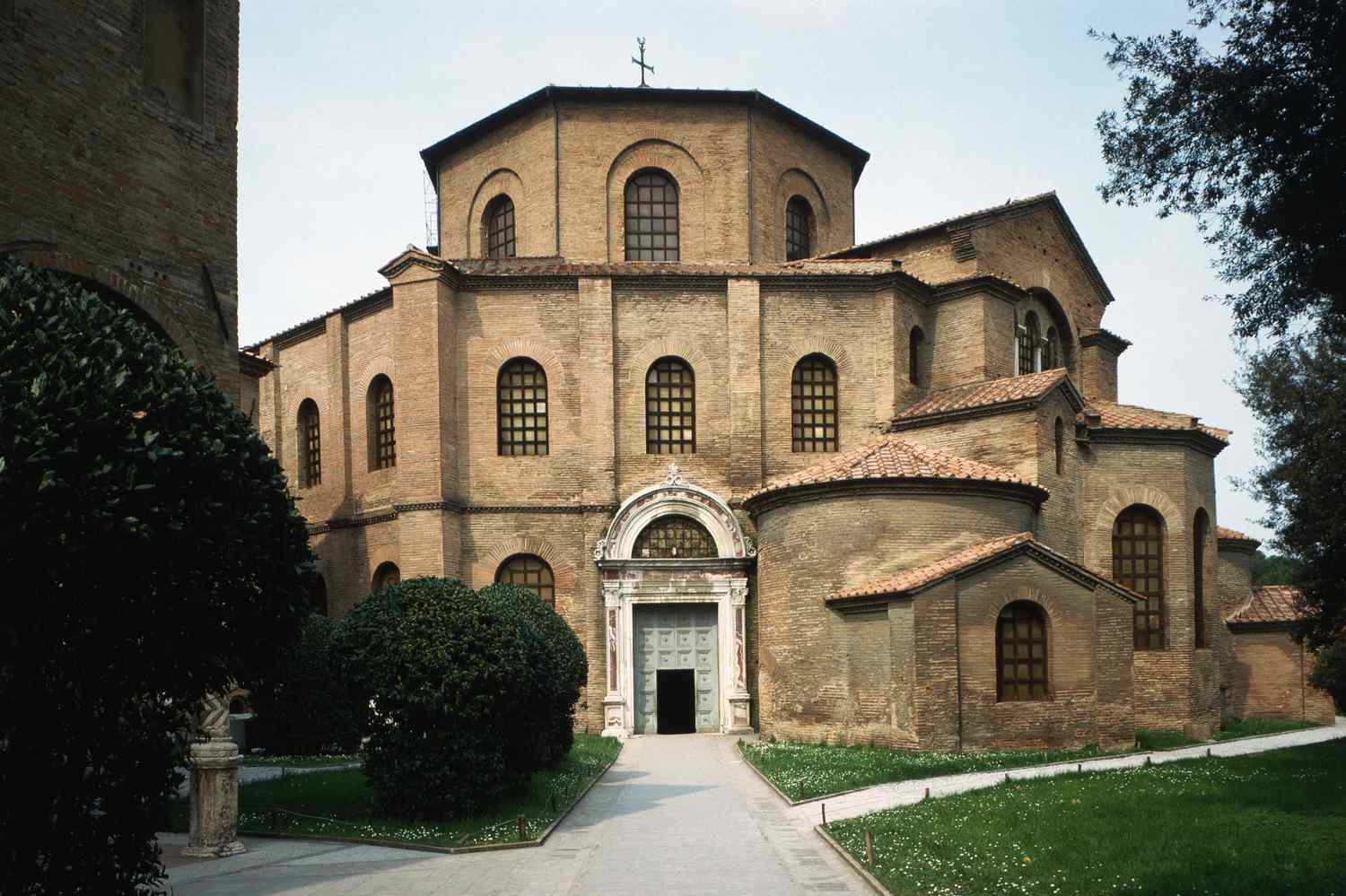Home>Theology and Spirituality>What Happens During Baptism


Theology and Spirituality
What Happens During Baptism
Published: February 29, 2024
Ericka Andersen, an editor at Christian.net, expertly merges digital strategy with content creation, focusing on faith and societal issues. Her communication skills enhance the platform's engaging narratives, fostering meaningful dialogue on belief's impact on society.
Discover the significance and rituals of baptism in theology and spirituality. Learn about the spiritual symbolism and traditions of this sacred sacrament.
(Many of the links in this article redirect to a specific reviewed product. Your purchase of these products through affiliate links helps to generate commission for Christian.net, at no extra cost. Learn more)
Table of Contents
The Significance of Baptism
Baptism holds significant importance in various religious traditions and is considered a pivotal rite of passage. It symbolizes the cleansing of sins, spiritual rebirth, and initiation into the faith community. The act of baptism is a public declaration of one's commitment to their religious beliefs and signifies a new beginning in their spiritual journey. It is a profound and meaningful ritual that is deeply rooted in religious teachings and traditions.
-
Cleansing of Sins: Baptism is often viewed as a symbolic cleansing of sins. It represents the washing away of past transgressions and the purification of the soul. In Christianity, for example, baptism is seen as a sacrament through which an individual is cleansed of original sin and welcomed into the community of believers.
-
Spiritual Rebirth: Baptism is also associated with spiritual rebirth or regeneration. It marks the beginning of a new life in accordance with the teachings of a particular faith. In many religious traditions, baptism is believed to impart spiritual grace and initiate a transformative journey towards spiritual growth and enlightenment.
-
Initiation into the Faith Community: Through baptism, individuals are formally welcomed into the religious community. It serves as a rite of passage, signifying their acceptance into the faith and their commitment to its beliefs and practices. This communal aspect of baptism fosters a sense of belonging and unity among believers.
-
Symbol of Faith: Baptism serves as a powerful symbol of an individual's faith and devotion to their religious beliefs. It publicly demonstrates their allegiance to the teachings and principles of their faith, and it is often accompanied by vows or affirmations of faith.
-
Promise of Salvation: In many religious traditions, baptism is linked to the promise of salvation and eternal life. It is believed to be a crucial step towards attaining spiritual salvation and entering into a closer relationship with the divine.
The significance of baptism varies across different religious denominations and cultural contexts, but its fundamental importance as a sacred ritual remains consistent. It is a deeply meaningful and transformative experience that holds profound spiritual significance for individuals and communities alike.
Read more: What Happens During A Christian Baptism
The History of Baptism
-
Ancient Origins: The practice of baptism has ancient roots, with evidence of ritualistic immersion and purification ceremonies dating back to pre-Christian eras. In the ancient Near East, various cultures engaged in rites involving water as a symbol of spiritual cleansing and renewal. These early practices laid the foundation for the development of baptism as a religious sacrament.
-
Jewish Tradition: The concept of ritual immersion for purification is deeply ingrained in Jewish tradition. The Hebrew Bible mentions rituals of immersion in natural bodies of water, known as mikveh, for spiritual and ritual purity. This tradition influenced the later Christian understanding of baptism as a symbolic act of cleansing and spiritual rebirth.
-
Early Christian Practices: In the early Christian community, baptism played a central role as a rite of initiation and commitment to the teachings of Jesus Christ. The Gospels describe the baptism of Jesus by John the Baptist in the River Jordan, which is considered a pivotal event in Christian theology. This event served as a model for the sacrament of baptism within the Christian faith.
-
Emergence of Baptism as a Sacrament: As Christianity spread, baptism became formalized as a sacrament within the church. The Didache, an early Christian document from the first century, provides instructions for the practice of baptism, indicating its significance in the early Christian community. Over time, baptism evolved into a structured ritual with specific prayers, blessings, and symbolic actions.
-
Medieval and Renaissance Period: During the medieval and Renaissance periods, baptism continued to be a central sacrament within the Christian church. The development of baptismal liturgies and the construction of baptismal fonts in churches reflected the growing importance of this rite within Christian worship and communal life.
-
Reformation and Beyond: The Protestant Reformation brought about various interpretations of baptism within different Christian denominations. While some continued to practice infant baptism as a means of initiation into the faith, others, such as the Anabaptists, advocated for adult baptism as a conscious expression of faith. These differing perspectives contributed to the diversity of baptismal practices within Christianity.
-
Contemporary Practices: In modern times, baptism remains a significant rite in Christianity, as well as in other religious traditions. The ritual may vary in form and symbolism across denominations and cultures, but its historical significance as a sacred act of initiation and spiritual rebirth endures.
The history of baptism is a testament to its enduring importance as a sacred ritual that has evolved and adapted across different historical periods and religious traditions.
The Different Types of Baptism
-
Infant Baptism: This form of baptism is practiced in many Christian denominations, where infants or young children are baptized as a symbol of their inclusion in the faith community. The act is often performed by sprinkling or pouring water over the child's head, signifying their initiation into the church and the reception of spiritual grace.
-
Believer's Baptism: Also known as adult baptism, this type of baptism is practiced by certain Christian groups, such as Baptists and Anabaptists, who believe that individuals should be baptized only after they have made a conscious decision to follow the teachings of their faith. It is a public declaration of one's personal faith and commitment to the religious community.
-
Affusion and Immersion: Baptism by affusion involves the pouring or sprinkling of water over the individual's head, while baptism by immersion entails the complete submersion of the person in water. Both methods are practiced in various Christian traditions, each carrying its own symbolic significance related to purification and spiritual renewal.
-
Baptism in the Holy Spirit: This form of baptism is emphasized in certain Christian denominations, where believers seek to experience a spiritual baptism that empowers them with the gifts of the Holy Spirit. It is often associated with the manifestation of spiritual gifts, such as speaking in tongues and prophesying, as described in the New Testament.
-
Baptism for the Dead: This unique practice is found in the beliefs of some Christian sects, such as the Latter-day Saints (Mormons), who perform proxy baptisms on behalf of deceased individuals. The intention is to offer the opportunity for salvation to those who have passed away, based on the belief that baptism is essential for spiritual progression.
-
Baptism in Other Religions: Baptism, or similar rites of initiation involving water, is not exclusive to Christianity. In Hinduism, the ritual of "Jal Samadhi" involves immersion in water as a form of spiritual purification and rebirth. In Sikhism, the "Amrit Sanskar" is a ceremony of initiation that includes the symbolic washing of the initiate's hair with water.
The diverse types of baptism reflect the rich tapestry of religious beliefs and practices, each carrying its own symbolic and spiritual significance within the context of different faith traditions.
The Symbolism of Baptism
-
Cleansing and Purification: Baptism symbolizes the cleansing of sins and spiritual purification. The act of immersion in water or the pouring of water over an individual represents the washing away of past transgressions and the purification of the soul. It signifies a fresh start and the removal of spiritual impurities, allowing the individual to begin anew in their faith journey.
-
Death and Resurrection: In Christian symbolism, baptism is often associated with the death and resurrection of Jesus Christ. The immersion into water represents the burial of the old, sinful self, while emerging from the water symbolizes a new life in Christ. This powerful imagery reflects the transformative nature of baptism and the believer's identification with the life, death, and resurrection of Jesus.
-
Spiritual Rebirth and Renewal: Baptism is a symbol of spiritual rebirth and renewal. It signifies a profound transformation within the individual, marking the beginning of a new life guided by the principles of their faith. The immersion in water represents the death of the old self, while rising from the water symbolizes a renewed and regenerated spiritual existence.
-
Incorporation into the Faith Community: The act of baptism symbolizes incorporation into the larger faith community. It signifies the individual's acceptance into the religious community and their commitment to its beliefs and practices. Baptism serves as a unifying symbol, connecting believers in their shared faith and fostering a sense of belonging and unity within the community.
-
Sealing with the Holy Spirit: In some Christian traditions, baptism is associated with the reception of the Holy Spirit. The symbolic anointing with oil or the laying on of hands following baptism represents the bestowal of spiritual gifts and the indwelling of the Holy Spirit within the individual. This symbolism underscores the believer's empowerment and guidance by the divine presence.
-
Initiation into Sacred Mysteries: Baptism is often viewed as an initiation into the sacred mysteries of the faith. It marks the beginning of a deeper understanding and participation in the spiritual teachings and practices of the religious tradition. The symbolism of baptism conveys the individual's entry into the profound truths and spiritual depths of their faith.
-
Symbol of Faith and Allegiance: Baptism serves as a powerful symbol of an individual's faith and allegiance to their religious beliefs. It publicly declares their commitment to the teachings and principles of their faith, serving as a visible sign of their dedication and devotion to their spiritual path.
The symbolism of baptism is rich and multifaceted, carrying profound spiritual significance across various religious traditions. It encapsulates themes of purification, rebirth, community, and divine connection, making it a deeply meaningful and transformative rite within the realm of religious practice.
The Process of Baptism
The process of baptism encompasses a series of symbolic actions and rituals that hold deep spiritual significance within various religious traditions. While specific details may vary across denominations and cultural contexts, the fundamental elements of the baptismal process typically include the following:
-
Preparation and Instruction: Before undergoing baptism, individuals often receive instruction and guidance regarding the significance of the ritual and its implications for their spiritual journey. This may involve educational sessions, counseling, or study of religious texts to ensure a thorough understanding of the commitment being made.
-
Profession of Faith: In many Christian traditions, individuals are required to make a public profession of their faith before being baptized. This declaration of belief serves as a personal affirmation of their commitment to the teachings and principles of their religious faith.
-
Renunciation of Sin: As part of the baptismal process, candidates are called upon to renounce sin and embrace a life guided by the values and precepts of their faith. This renunciation symbolizes a conscious turning away from behaviors and attitudes that are contrary to the teachings of their religious tradition.
-
Immersion, Pouring, or Sprinkling: The method of administering the water varies among different denominations. Immersion involves the complete submersion of the individual in water, symbolizing a profound burial of the old self and emergence into a new life. Pouring and sprinkling, on the other hand, involve the application of water over the person's head, signifying the cleansing and renewal of the individual's spiritual state.
-
Invocation of the Divine: During the baptismal rite, prayers, blessings, and invocations are often offered to seek the presence and guidance of the divine. These sacred words and gestures serve to sanctify the act of baptism and invoke spiritual grace upon the individual undergoing the ritual.
-
Anointing and Sealing: In some traditions, the newly baptized individual may receive an anointing with oil or the laying on of hands as a symbolic gesture of being sealed with the Holy Spirit. This act represents the bestowal of spiritual gifts and the indwelling of divine grace within the individual.
-
Welcoming into the Faith Community: Following the baptismal rite, the newly baptized individual is warmly welcomed into the religious community. This may involve expressions of support, communal prayers, and the assurance of ongoing spiritual guidance and fellowship within the faith community.
-
Continued Spiritual Growth: Baptism is not seen as a solitary event but as the beginning of a lifelong journey of spiritual growth and development. The newly baptized individual is encouraged to continue deepening their understanding of their faith, participating in communal worship, and living out the values of their religious tradition.
The process of baptism is a sacred and transformative experience that marks the initiation and spiritual rebirth of individuals within their respective religious communities. It is a deeply meaningful ritual that embodies themes of purification, commitment, and divine grace, serving as a pivotal milestone in the spiritual lives of believers.
Read more: What Happened During The Baptism Of Jesus
The Role of Baptism in Different Religions
Christianity
In Christianity, baptism holds a central role as a sacrament of initiation and spiritual significance. It is viewed as a fundamental act of obedience to the teachings of Jesus Christ and a symbol of cleansing, rebirth, and incorporation into the body of believers. Different Christian denominations may vary in their practices, such as infant baptism, believer's baptism, or the mode of administration, but the underlying significance remains rooted in the faith's core beliefs.
Islam
In Islam, while there is no formal ritual equivalent to Christian baptism, the concept of spiritual purification is integral to the faith. Muslims engage in ablution (wudu) before prayer, which involves the washing of specific body parts as a form of physical and spiritual purification. Additionally, the Shahada, the declaration of faith, serves as a public affirmation of one's commitment to Islam, akin to the profession of faith in baptism.
Hinduism
In Hinduism, the ritual of initiation and spiritual purification is symbolized through various ceremonies, including the sacred thread ceremony (Upanayana) for young males and the rite of passage for girls. While not identical to the Christian concept of baptism, these rituals mark the entry into religious learning and the assumption of spiritual responsibilities within the Hindu community.
Read more: What Happens During A First Communion
Buddhism
Buddhism does not have a formal baptismal rite, but the act of taking refuge in the Triple Gem (Buddha, Dharma, and Sangha) serves as a significant spiritual commitment for Buddhists. This act of refuge-taking symbolizes a deepening of faith and a formal entry into the Buddhist community, reflecting elements of initiation and spiritual dedication.
Sikhism
In Sikhism, the Amrit Sanskar, or Khalsa initiation ceremony, plays a pivotal role in the spiritual life of adherents. This ceremony involves the administration of Amrit, a sweetened, sanctified water, to initiate individuals into the Khalsa community. While distinct from traditional baptism, the Amrit Sanskar signifies a profound commitment to the Sikh faith and the adoption of the Khalsa code of conduct.
Judaism
In Judaism, the ritual of immersion in a mikveh (ritual bath) serves as a form of spiritual purification and renewal. While not equivalent to Christian baptism, the mikveh is used in various contexts, including conversion, preparation for marriage, and the observance of certain religious laws. It symbolizes a transition to a state of spiritual purity and readiness for significant life events.
Indigenous and Folk Religions
In indigenous and folk religions, rituals involving water as a symbol of purification and renewal are prevalent. These may include ceremonial bathing, immersion in natural bodies of water, or rites of passage that mark an individual's entry into adulthood or participation in communal religious practices. While distinct from institutionalized forms of baptism, these rituals reflect the universal themes of spiritual cleansing and transition found in many religious traditions.
The role of baptism, or its equivalent, in different religions underscores the universal human need for spiritual purification, initiation, and commitment to faith. While the specific practices and symbolism may vary, the underlying significance of these rituals remains deeply rooted in the spiritual lives of believers across diverse religious traditions.













